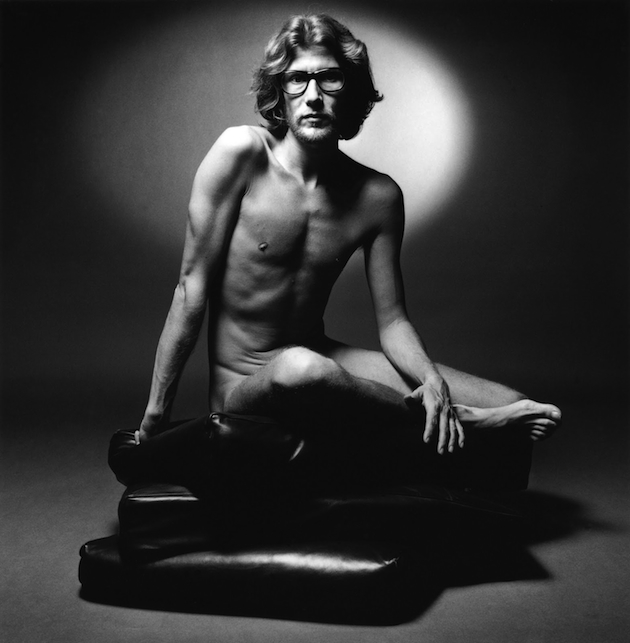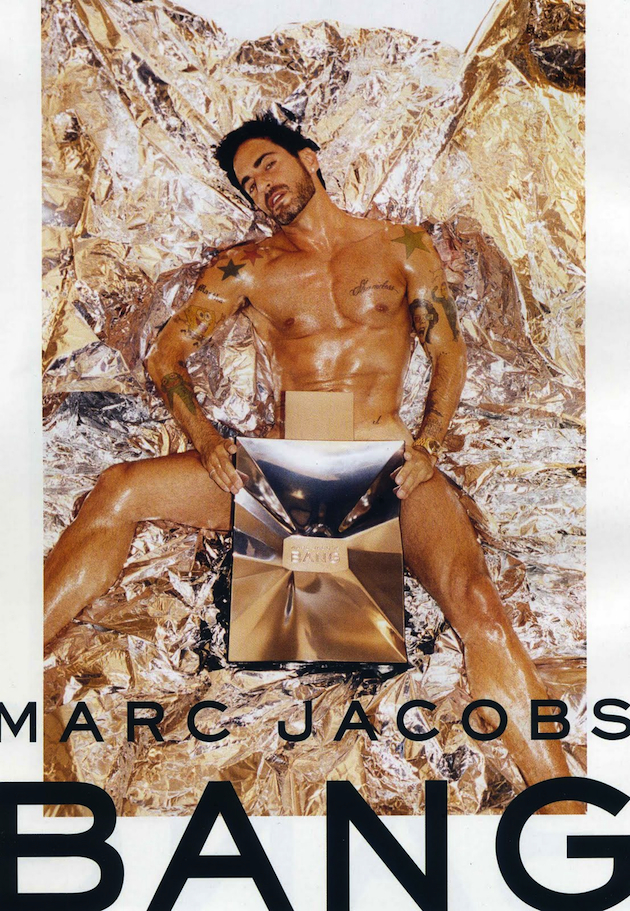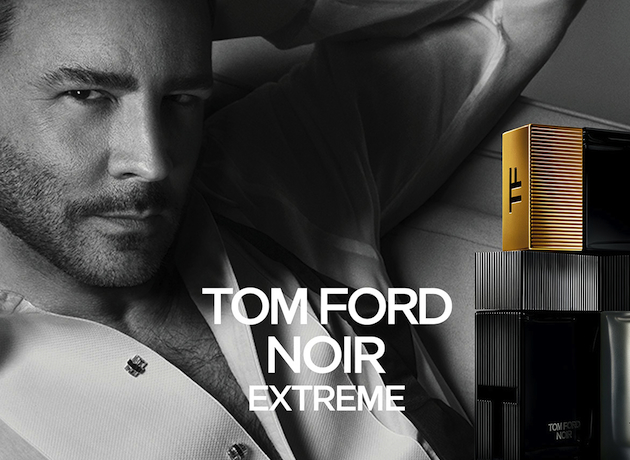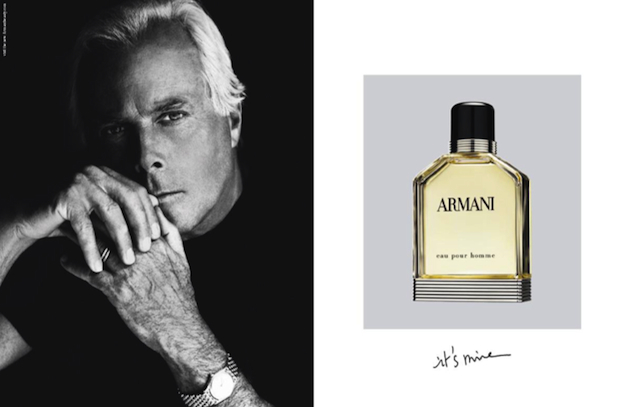
The link between fashion and perfumes is tight and long-dated. Since the beginning of the century, designers have pulled the production of fragrances alongside their clothing and accessory lines, and nowadays they have incredible economic importance, sometimes even sustaining the sales volume of the whole brand. Their importance is shown in the adv campaigns, which sometimes place the designer himself on stage to promote the fragrance. The forerunner of this was Yves Saint Laurent. In 1971, he decided to use himself as a testimonial for his first fragrance, eau d’homme: the shoot of him naked, directly looking into the camera, by photographer Jeanloup Sieff, is almost legendary. The intention of YSL was to shake and shock the public at the beginning of the seventies, with an image both powerful and unexpected. In turn, instead of merely promoting a fragrance, he presented himself. In a moment, the shy designer became a symbol of the lure for transgression that was in the air at the beginning of the seventies and together with him, the perfume he was fostering became the scent associated with that crave.

Since 1971, designers have been protagonists of campaigns for their own clothing lines, putting as much of themselves in the name of the brand, as in its public image; Vivienne Westwood was the first, and after her, many others. However, with fragrances the situation is different: the perfume is something designers do not ‘design’ personally, but it is a communicative tool as immediate as it is inconsistent, and has to sum up the philosophy of their brand in a scent. After YSL, many other designers have put their persona on stage to promote their fragrances; among them, Tom Ford, Marc Jacobs and Giorgio Armani, all of them communicating something of themselves in the photos: sensuality for Ford, racy playfulness for Jacobs, rigorous refinement for Armani. Advertising campaigns are primary made to sell something physical. Together with the product, campaigns are shaped to make the product the most desirable, adding elements, telling a story, and inevitably selling something more than the product itself. So, the real question here is: what are designers really selling, putting their faces of the billboards?

Becoming ambassadors of their own philosophy and work, and the world they think about while designing clothes, they actually ‘sell’ themselves. It is a matter of identity, captured in the ethereal qualities of the combination of many components. Mr. Armani, for example, referred to his perfume as ‘My style in a box’, so it was a natural move for him to put his own image in the adv. Italian sociologist Alberto Abruzzese said the testimonial is not informative, but attractive and seductive; however, the kind of seduction these men have put in their campaigns informs of their private lives, their tastes and choices. It makes the designer in contact with the widest public, because everyone can easily step inside a perfumery and try the scent on, get the feeling of the perfume on the skin, and virtually enter in the world of a design house. The reasons of this kind of choice, which is primarily aesthetic, are numerous: branding, sales and – why not? – a good dose of narcissism; but again, they all have to do with a project. To design something means having a clear idea of the place, the world, in which these designs fit. It is about establishing a certain style coming from an idea, a reflection, a thought; which, ironically, has the same consistency of a scent.


